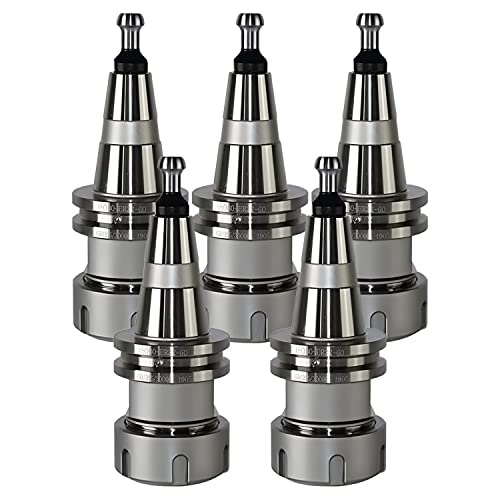Its been a while since the last update. Reason for that is because I was having some trouble getting the cylinder done right. The original plan was to drill and ream the 1/2" bore in a bronze cylinder blank. Reaming that size turned out difficult for my little lathe. There was too much chatter and the resultant bore not very clean. I decided to abandon the ream and use a traditional boring bar instead.
In preparation for turning the cylinder, my old Atlas 6 lathe got an upgrade this past week. I ordered a quick-change tool post set from
Littlemachineshop.com
A quick-change tool post allows you to set the tool in its holder just once and then quickly change the holder as needed. This post is much faster than the original rocker style post and light years ahead of those 4 position turret things that come with most lathes.
Before getting started on the cylinder, we need to fabricate a special little measuring tool called a center test indicator. They are also known as a wiggler, or wobbler. The wiggler helps get an odd shaped piece centered in the 4 jawed chuck. Here is an article I found on how to make one.
http://1stclass.mylargescale.com/xo18thfa/Nina%2001/Wobbler.jpg
Modify this idea to suit you lathe. And here is an illustration of how to use it.
http://1stclass.mylargescale.com/xo18thfa/Nina%2001/Wiggler.jpg
My homemade wiggler is a 2-piece contraption using a ball for the pivot point.
With that done, lets get started on the cylinder. Here is the drawing:
http://1stclass.mylargescale.com/xo18thfa/Nina%2001/Cylinder.jpg
The cylinder body is bronze, alloy 932. Bronze only comes in round bar and our cylinder is more or less rectangle. So we will have to start with an oversized bar and work it down. First, face off a length of 7/8 diameter bar to 1 3/8 long. Grip the bar sideways in the 4 jawed chuck and turn it flat to a width of 5/8
This face spot will eventually be the port face.
Locate and lightly center punch the cylinder bore center. Grip the cylinder in the 4 jawed chuck and center it up with the wiggler.
Drill a 1/8 pilot hole thru the cylinder. With the lathe set at the slowest speed, preferably in backgear if your lathe has one, drill thru with 7/16.
Set up the boring bar in the lathe. Since there is 1/16 of material yet to remove from the bore, you have plenty of time to set-up, practice and make adjustments before taking the final cuts.
Take very light cuts. Even the most rigid boring bars find a way to spring. So take a cut occasionally without any adjustment. Let the bar relax out. Test the bore with a short length of 1/2" stainless steel piston material. The piston material will eventually go in very tight. Dont force it. Take another super light cut, and test the piston again. When the piston just goes in, its time to stop the boring bar operation and finish the bore.
Be patient boring out he cylinder. Expect 18 to 20 passes with the boring bar to get it right.
High quality cylinder bores are finished with a process called lapping. Lapping uses a fine abrasive powder mixed in oil on a lapping mandrel to polish the bore. Since our cylinder is bronze, a hard wood mandrel will work fine. Turn a 4, or so length of maple or oak to exactly .500. Wipe on some abrasive powder mix. Slide the cylinder over the mandrel and turn it by hand. It will be tight at first, but the wood will smoothen down and the cylinder will turn freely.
When the cylinder is turning freely, hold it buy hand and turn on the lathe. Work the cylinder over the entire length of the mandrel. It will only take about 30 to 45 seconds for the lap to polish the bore. The bore comes out free of scratches and with a lightly frosted surface. The piston material should slide smoothly with no air blow-by.
In the lapping process, the mandrel must be a softer material the cylinder material. The abrasive lapping compound embeds itself in the softer mandrel and polishes the cylinder walls. For brass and bronze cylinders, wood mandrels work fine. For steel or cast iron cylinders, use a brass or copper mandrel. Lapping only removes micro scratches and burrs left from the boring bar. The initial bore has to be straight, round and reasonably smooth. If the bore is bad to start with, lapping will not fix it.
Thats it for now. Next time we will shape the cylinder, put on a top cover and hang it on the standard.














![DreamPlan Home Design and Landscaping Software Free for Windows [PC Download]](https://m.media-amazon.com/images/I/51kvZH2dVLL._SL500_.jpg)













































